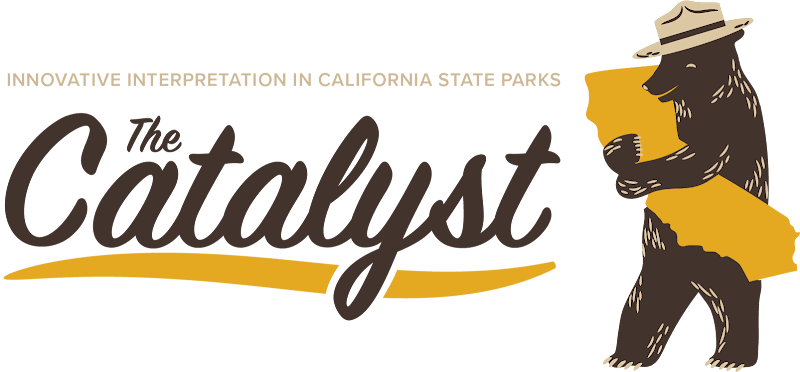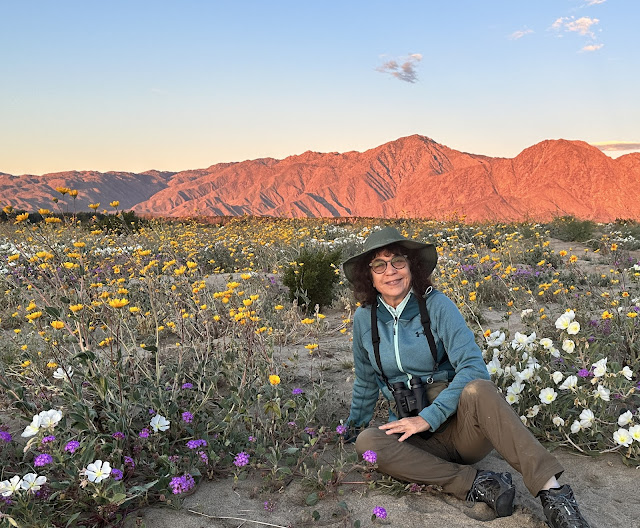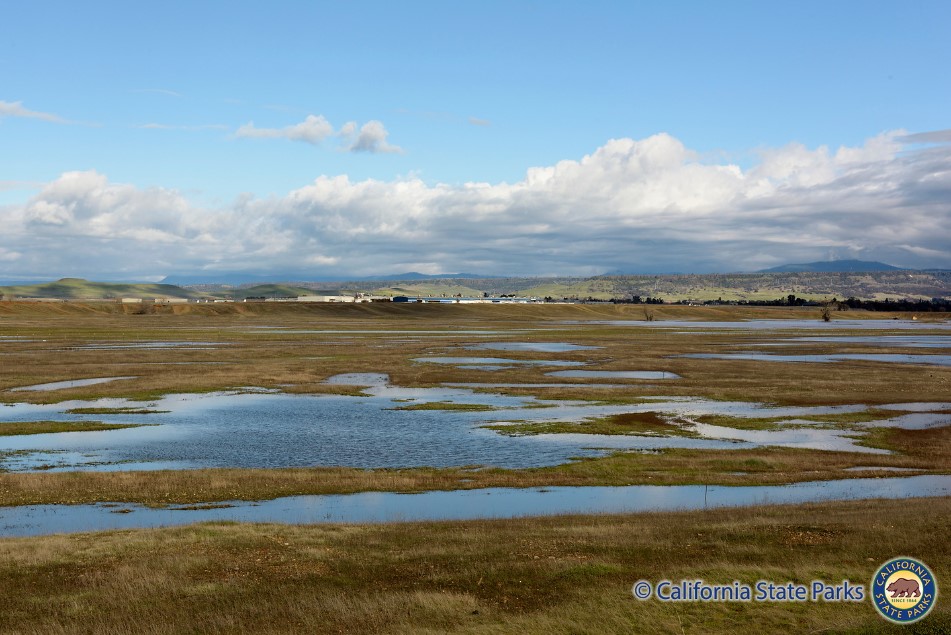
Beyond Interpretation – Meet an Environmental Scientist

What will you be doing on September 7th?
If you interpret in a California State Park, maybe you’ll be behind an outreach table talking about how easy it is to identify any living thing with the powerful AI tools in the free phone app, iNaturalist. And maybe you’ll explain how other devoted iNaturalist users will verify your observations to become research-grade data that fills out the picture of our state’s extraordinary biodiversity. That is just about all it takes to run a “bioblitz” and to transform a casual park visitor into a community scientist for California Biodiversity Day.
Leah Gardner will certainly be busy on September 7th and throughout the now-expanded California Biodiversity Week. As a Senior Environmental Scientist and the Statewide Botanist for California State Parks, Leah has been involved in the Department’s participation in this multi-agency event since it was established by Governor Brown in 2018. In that time, she’s seen participation in the event grow from just five parks in 2019 to over sixty in 2024.
As Leah reminded us in a recent interview with the Interpretation and Education Division, “protection of biodiversity is central to the mission of State Parks.” But that might not be as obvious to people outside of the Department as we might think. “Many members of the public don’t understand terms like ‘biodiversity’ and other academic language in ways that scientists might assume they do,” she cautions.
And that’s where you, the Interpreter, come in. “Environmental Scientists need Interpreters,” Leah told us. “We’re scientists, and we have a lot of knowledge, but we’re not always great at communication.” Leah holds up Biodiversity Day as a perfect example of what we can accomplish when we work across the silos of our job classifications. “An Environmental Scientist can help lead tidepool or birding walks, but we really benefit from teaming up.”

But what does an Environmental Scientist do? “It’s a large classification,” Leah told us. Environmental Scientists may be wildlife biologists, water quality specialists, soil scientists, coastal experts, and more. They have degrees in biology, ecology, geography, and environmental policy. They conduct various types of field surveys, work on fuel reduction, and manage invasive plants.
In short, they focus on managing our parks’ natural resources.
In her six years at State Parks, Leah has known the work of natural resource management at many levels. She’s regularly engaged in statewide work, currently contributing to the multi-agency conservation plan for the Western Joshua Tree and serving on the California Interagency Noxious and Invasive Plant Council. As the Department’s Statewide Botanist, she’s the one who District staff turn to for all things plant-related, helping with vegetation mapping, rare plant surveys, and early detection rapid response targeting newly arrived weeds.
And then there’s the direct support she provides to individual staff. “I get all kinds of random emails,” Leah told us. “Requests for plant identifications, how to treat certain weeds, recommendations for seed mixes for specific restoration projects—it’s fun, and every day is different.”
Leah’s enthusiasm for our state’s flora is infectious, so it’s no wonder so many State Parks staff reach out to her for help. California State Parks are rightfully beloved for their charismatic megaflora, where over a dozen park units include “Redwood” or “Big Trees” in their names. But in our interview, Leah got us most excited about the beauty and diversity of the plants in a more surprising corner of our park system: State Vehicular Recreation Areas.
“Hungry Valley SVRA has become one of my favorite parks,” she told us. “It’s large and has a wide range of elevations, extensive stands of chaparral yucca, a mix of species where different bioregions come together… valley oaks, chaparral, bears, mountain lions—it’s a beautiful place.” In her visits there she’s added over 50 species to the park’s existing plant list, bringing the total to over 300.
But Leah may have been at her most enthusiastic talking about Clay Pit SVRA—an off-road park carved from the clay mine dug to build Oroville Dam. “Vernal pool ecosystems have evolved there in very recent times in a highly disturbed place,” she told us. When water seasonally gathers in these low-lying depressions, they become happy-if-ephemeral homes to thriving communities of tiny plants and invertebrates before completely drying up in the warm months. “They invite you into the world of small things and the intricacies of how they survive their challenging conditions.” Indeed, in her vernal pool surveys at Clay Pit this spring, Leah identified 32 new species previously unknown in the park. “There’s always more life there than you realize when you look closely.”

“It would be nice to broaden our audience for those parks,” she told us. “Most [SVRAs] have specific areas that prohibit motorized recreation that are very suitable for hiking and exploring.”
And that brings us back to Interpreters.
“CA does have amazing biodiversity, and Interpreters can help the public see the local picture of their part of that larger biodiversity.” Do you work in a park that doesn’t have redwoods? Leah’s advice is to “get excited about tiny plants–[about] belly flowers!” Or really “anything that can emphasize the diversity of life that’s out there to engage the public with a greater sense of appreciation.”
As Interpreters, it’s not necessarily our job to be the experts, but to share out the knowledge, passion, and messages that the experts need to have communicated. If you don’t know where to start with your park’s flora, Leah has a message for Interpreters: “Feel free to call on the Natural Resources Division staff at Headquarters! [We] can talk with them about their questions or find the person in their District to direct them to.”
If that seems too intimidating, you can start by simply getting to know what grows in your park. Leah recommends using the Calflora website’s “What Grows Here” tool to generate a plant list for your park. Or you can create a project for your park in iNaturalist, where users can upload a photo of any living organism—even signs of life like tracks, scat, shells, or nests—to get a list of likely matches. Or you can meet with your local chapter of the California Native Plant Society (CNPS), who may have already created a plant list for your park.
When will you start partnering with a State Parks Environmental Scientist? Why not make it September 7th, California Biodiversity Day? Contact Erika Delemarre or Leah Gardner, herself, to get started.
